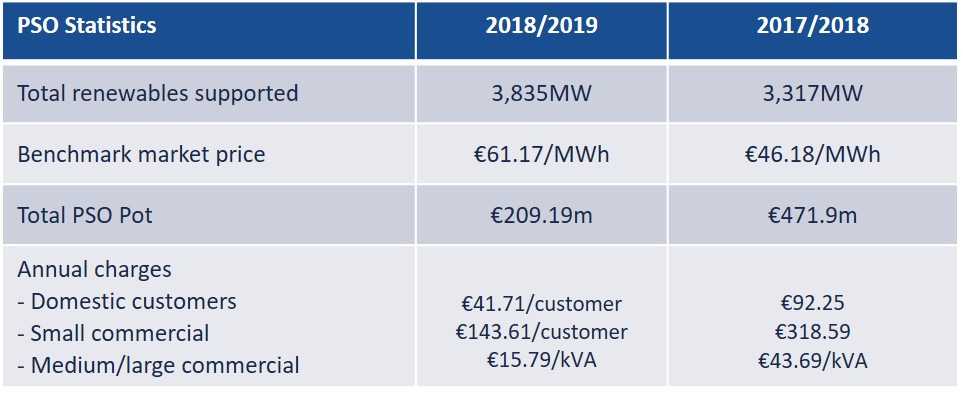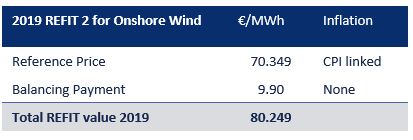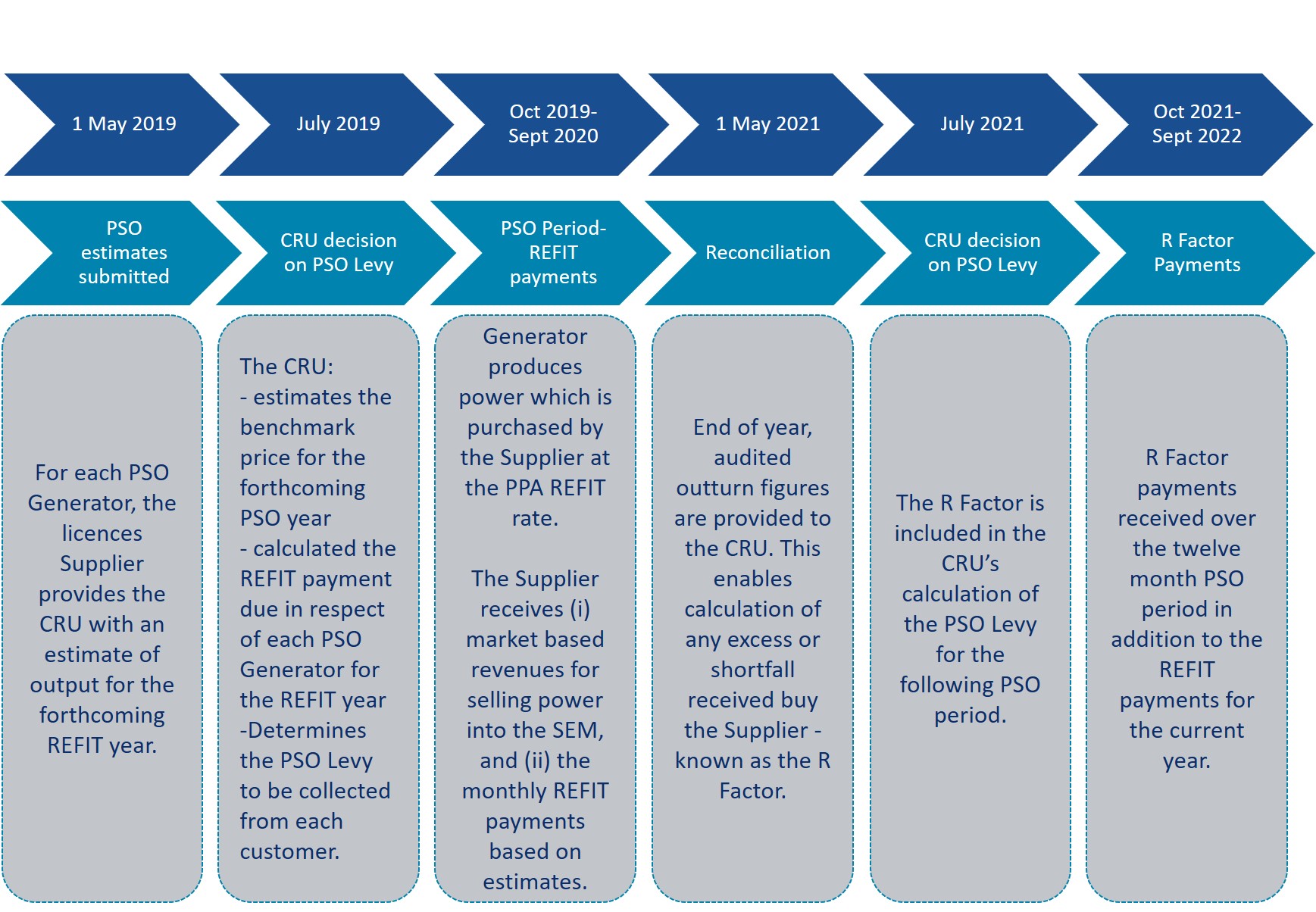Overview of REFIT (Renewable Energy Feed-In-Tariff)
Overview of REFIT
Overview
As industry focus begins to move away from the Renewable Energy Feed-In-Tariff (REFIT) and into the new Renewable Energy Support Scheme (RESS), we use this Insight blog as an opportunity to refresh our memories and look at how the mechanics of the current REFIT support scheme operates.
Since 2006, renewable generation in Ireland has been supported by the REFIT tariff. REFIT was designed to provide certainty to renewable generators by providing them with a minimum price for each unit of electricity exported to the grid over a 15-year period. The scheme is funded by the PSO Levy which is collected by suppliers through electricity customers’ bills.
Ex-Ante Calculation
On an annual basis, the Commission for Regulation of Utilities (CRU) calculates its estimate of the cost of the REFIT scheme and the value of REFIT payments for each eligible generator. In July 2018, the CRU published the PSO Levy decision paper for 2018/2019. The table below shows some key figures arising out of that report including the total renewables supported by REFIT for the current PSO year, the benchmark market price for the period as estimated by the CRU, and the charges levied on energy users to fund the PSO pot (€209.19m).
To qualify for REFIT, a Generator must be in receipt of a Letter of Offer from the CRU and must have entered into a 15-year Power Purchase Agreement (PPA) with a licensed supplier with certain criteria. The supplier is the party that receives the REFIT payments. The REFIT/PSO year runs from 1st October to 30th September each year and each year the REFIT reference prices for the support scheme change to reflect inflation. The latest published prices can be found here.
Taking a large-scale wind generator exporting over 5MW; the refit reference price for the project for the PSO year 2018/2019 is €70.349/MWh. As detailed below, the project will ultimately earn a top-up amount equal to the difference between the actual market revenues for the power generated and the REFIT reference price for REFIT 1 projects, and the total of REFIT reference price plus the €9.90/MWh for REFIT 2 projects, from the PSO pot.
Ex-Post Reconciliation
The Ex-Ante calculation of the amounts due to a REFIT recipient are made in advance of the actual year. Inevitably the amount that should have been paid will differ as forecasted market volumes will differ from actual market volumes and actual market prices will different from the benchmark price assumed by the CRU.
As a result, an Ex-Post Reconciliation occurs to identify the “R-Factor” amount – any excess or shortfall that occurred when actuals are compared to estimates. This R-Factor is settled in the subsequent PSO year.
In order to calculate the R Factor, after the end of the PSO year, each REFIT recipient is required to submit the actual outturn for the year to the CRU along with an auditor’s certificate verifying the annual outturn figures.
As a caveat to the above, the CRU have yet to confirm the treatment of the R factor in I-SEM. We don’t expect any majors changes however until a decision paper is published it is worth keeping in mind that the R-factor calculation may change. We expect the CRU to consult on a revised version of CER/08/236 which will define the treatment of the R-Factor and constraint payments amongst others. We anticipate a decision on this later in the year.
Below is a useful visual representation of the timelines involved in REFIT for the forthcoming PSO year 2019-2020, which shows that the R-Factor payments attributable for the PSO year 2019-2020 will be made in the PSO year 2021-2022, in effect two years later.
Article was originally written in March 2019.
If you would like to speak to ElectroRoute about our services, please email us at info@electroroute.com



